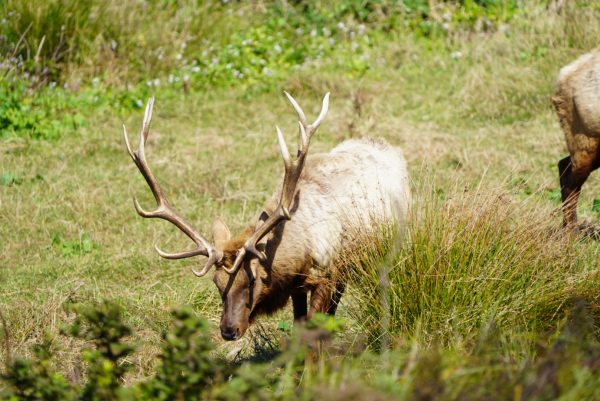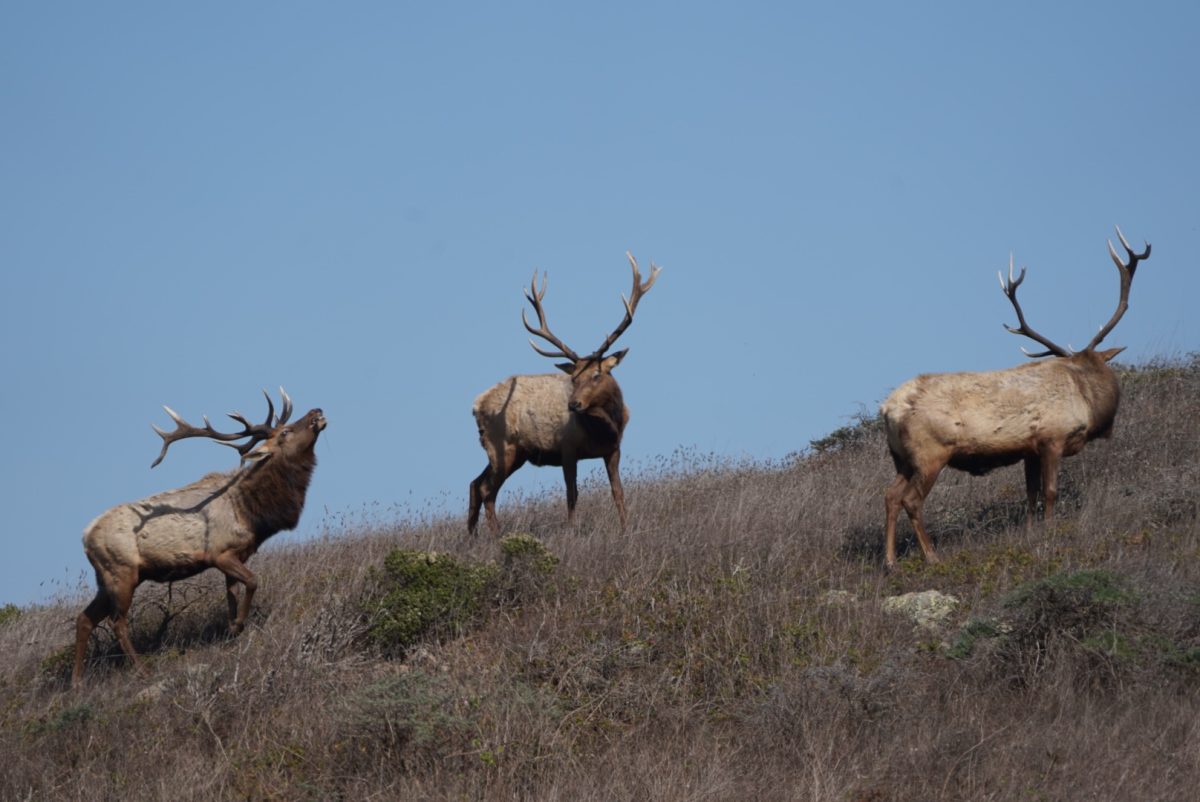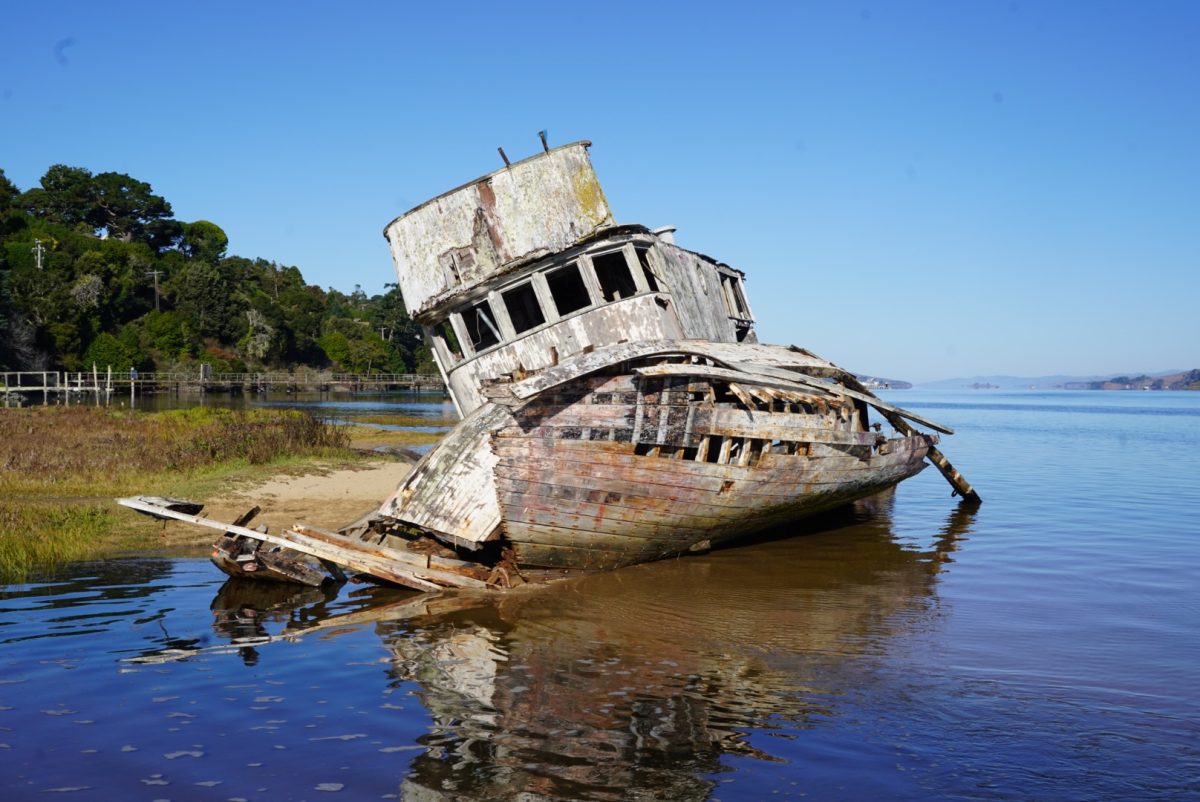California has an endemic species of elk that lives just a two hour drive away from Santa Rosa. Meet the Tule (tool-ee) elk, the smallest elk subspecies which was believed to be extinct in the 1800s, but due to a strong conservation effort there are now about 5,700 wild elk in the state.
While no longer endangered, the elk are still vulnerable; this is why the closest elk to us in Sonoma County live in the Point Reyes National Seashore, which operates as a sanctuary for the vulnerable species. These elk are descended from 10 elk reintroduced to the park during the ‘70s. Three herds currently roam the area. Two free-ranging herds live near Drake’s Beach and Limantour. The Drake’s Beach herd is composed of 170 elk, as of 2022, descended from a population that used to live in Limantour but left for greener pastures. The Limantour herd is home to 169 elk, as of 2021, according to the National Parks Service. The small size of these populations coupled with habitat loss across the state is why the elk are classified as vulnerable.
The third and largest herd numbers 262 elk as of 2022, and lives fenced in at Tomales Point. These elk have been the source of a major community controversy because of the infamous “elk fence,” an 8-foot-tall fence that encloses Tomales Point to keep the herd off of nearby farmland.
Point Reyes is unique among national parks because commercial farming still takes place within its boundaries. Small dairy farms line the fence with cattle going right up the border to graze. The fence has been described by some community members as “zoo-like” and has been blamed for the catastrophic decline in the herd’s population during the last drought, from 445 elk in 2019 to 220 in 2021.
According to Melanie Gunn, outreach coordinator for Point Reyes, the park knew it was time for a new management plan after this drought. The last plan was installed in 1998 and assumed that the elk population would self-regulate with the environmental conditions. However, this was prior to the extensive knowledge of the effects of climate change that the park now has. In 2021, the National Parks Service (NPS) brought supplemental water and mineral licks (blocks of selenium and copper rich salt) for the elk. This was practically unheard of because Tomales Point is designated wilderness, an area meant to be left in its natural condition in perpetuity. Gunn said, “That was an indicator to us that it was time to take a step back and look at the management of this area of the park because conditions we didn’t anticipate are now occurring.”

Biologists, like Julie Phillips who was interviewed by the Press Democrat earlier this year, argue that the state should be able to host more than 100,000 elk when considering all available habitats. Historically there were around 500,000 elk roaming the state. Another proposal entails leaving the fence up and periodically killing off some of the elk to prevent overpopulation, or as it’s referred to in the official proposal “lethal management” of the herd. Park officials will decide on the matter and implement their solution in August of 2024, right before next year’s rut would begin, according to Gunn.
In the meantime, the Elk rut and roam in the 2,600-acre enclosure, open from 6 a.m. until midnight. The whole hike is a 9.5 mile round trip, but visitors usually start seeing elk by the 2-mile mark. The terrain through that section of the trail is hilly but not too rough and can be reached in half an hour. Hiking shoes are recommended, as part of the trail at the end of Tomales Point is unmaintained. The hike can get windy so windbreakers are also recommended. Besides the elk, it’s also possible to see falcons, hawks, vultures, songbirds, gophers, beetles and giant grasshoppers.
Gunn tells community members to “stay tuned” and she encourages people to keep and touch and get engaged with the park as the plan is being implemented. During the public comment period in fall of 2023 they received over 25,000 comments from community members. There will be another chance for members of the public to comment on the proposals in spring of 2024, after the environmental assessment is completed.





